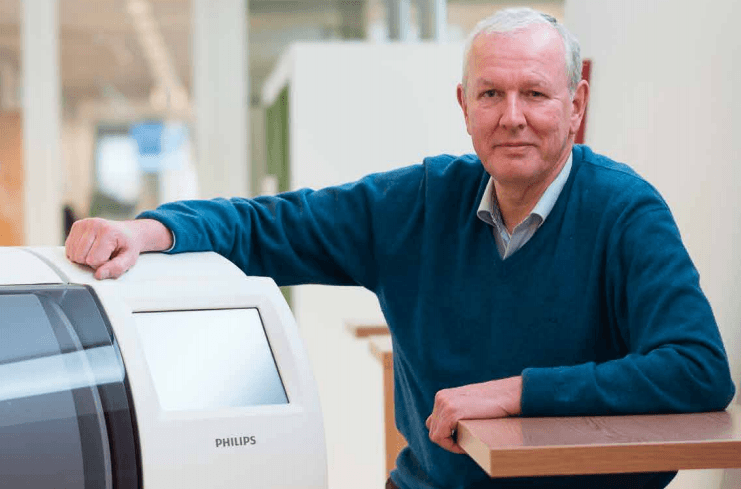
The weight of the regional supply chain is one of the crucial factors in the success of Brainport. The world wide research that Fred Baker and Antoine van Agtmael did the last couple of years shows that the supply chain has become a real value chain. A perfect example for this is the way Philips developed the IntelliSite pathology system.
This article first appeared in Source, a publication of Sioux (pdf, dutch)
Anatomic pathology plays a crucial role in the determination of diseases through research of suspicious tissue. The morphology of cells is visualised with dyes in different colours. Thus a huge archive of books full of patterns that point to various diseases was built up. As more and more information is recorded for each patient and the number of cancer cases increases, an improvement in efficiency is required. And that’s where Philips IntelliSite pathology system comes in.
Philips developed the system along with high-tech companies from Brainport: Sioux CCM, Prodrive and Frencken
Philips IntelliSite pathology system represents a breakthrough for the anatomical pathology. Using the Ultra Fast scanner, the image management and case study viewer software, an analysis can be significantly faster and better. Philips developed the system along with several high-tech companies from Brainport: Sioux CCM, Prodrive and Frencken. In addition, the financial risk was shared. After years of investing, it’s now time to harvest, says Hans van Wijngaarden, operations manager at Philips Digital Pathology Solutions.
“We needed a breakthrough to enable pathologists to start working more efficiently”, Van Wijngaarden states. “That could only be done by improving – and speeding up – the digital availability of quality information. This is what the IntelliSite pathology system does. The scanner can be loaded continuously with 300 slides with stained fabric. With each sample ten gigabytes of information is processed in a minute, for an image with a resolution of half a micron. Those files can be archived, accessed, viewed, compared and shared. Thus we enable a revolution in the workflow of anatomical histopathology. ”
“Give a group of technicians a complex challenge and you have a team.”
Busy
The IntelliSite stems from ten years of collaboration between Philips, Prodrive, Frencken and Sioux CCM. The last was responsible for the development of the plenary motion by means of linear motors, optical sensors, microscope technique and control software. For Philips this is an exceptional project. Van Wijngaarden: “It’s a technological and financial partnership. At Sioux they say ‘we laugh together, we cry together’. Our profession is full of beauty. Give a group of technicians a complex challenge and you have a team. We had no lack of knowledge, motivation, openness and responsibility. Yet there were unforeseen problems, particularly in terms of customer requirements and regulatory requirements. The development took more time, money and energy than expected. Sometimes the pressure on us rose sharply. We definitely learned to know each other very well.”
Partner
Since October 2014, the IntelliSite pathology research system may also be used for regular diagnosis in Europe. America will follow soon. “Together we have taken the risk, now is the time for collective harvest”, Van Wijngaarden says. “In the meantime we are developing the second generation of the system. We also work together with Sioux CCM on a project for Genomic Health. Sioux is a trusted partner that knows how to perform a task together. The cultural fit is of great importance. Therefore, this cooperation works great, even when the pressure on all levels is extremely high.”

